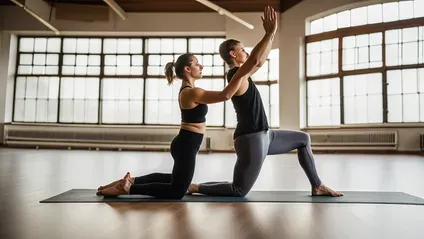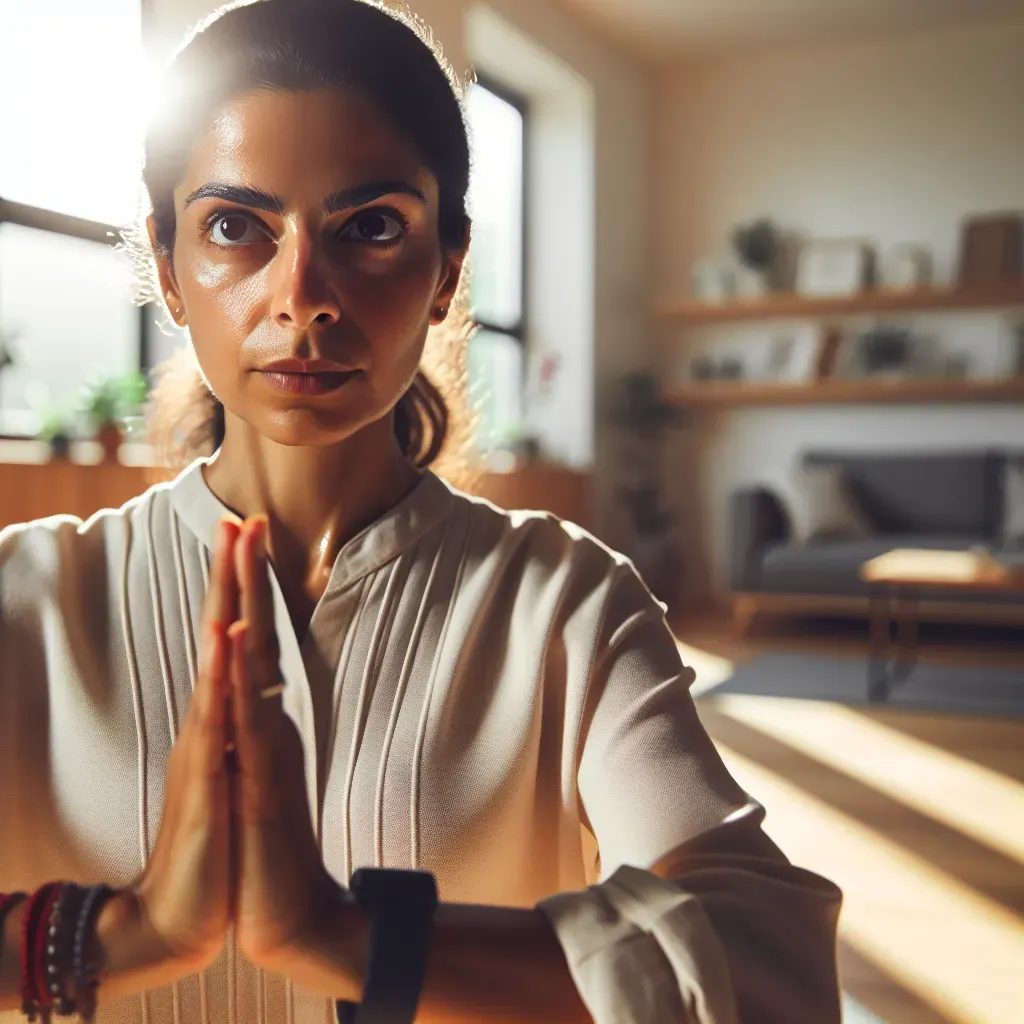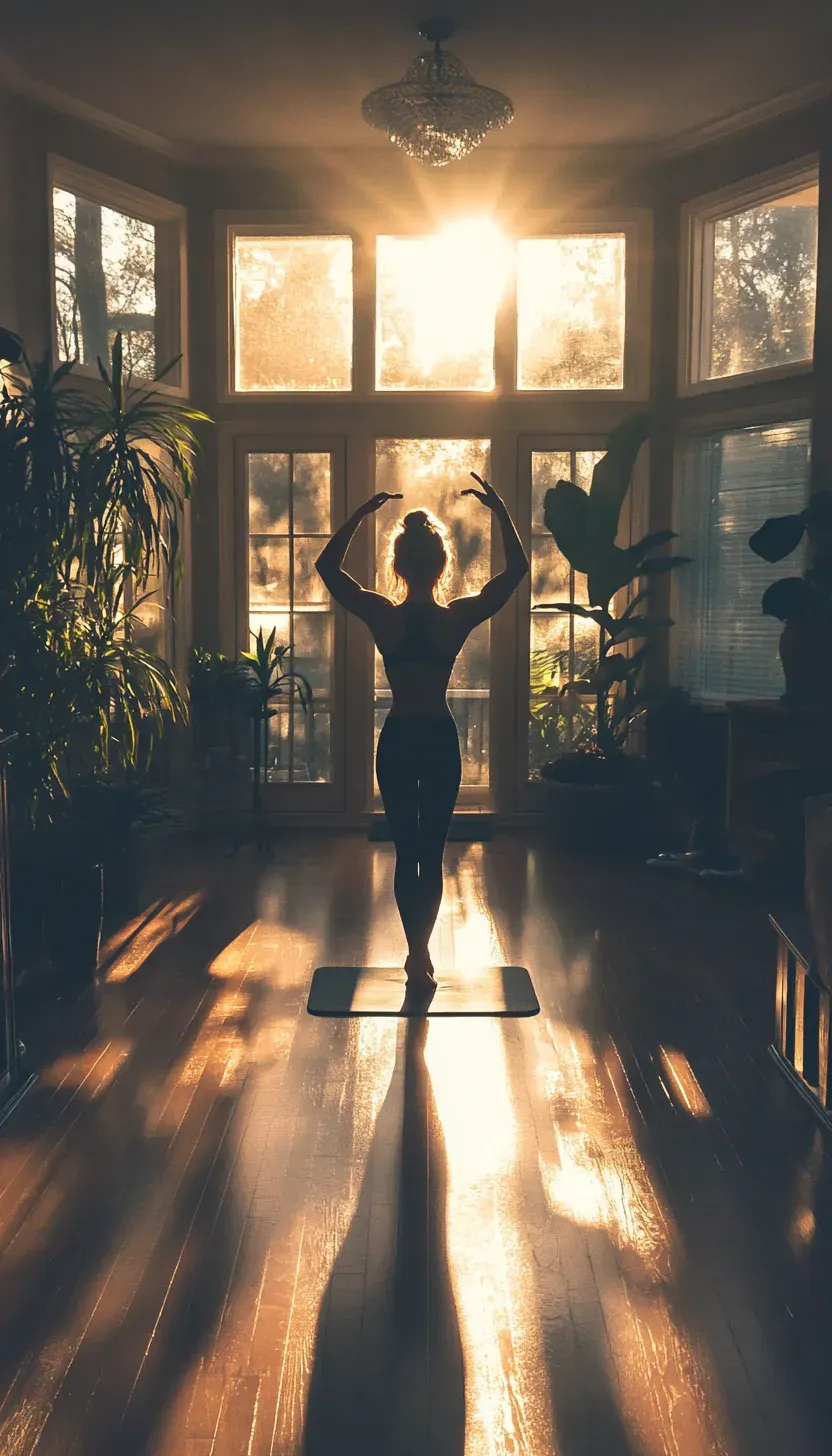Beginner’s Guide To Dynamic Yoga: Energizing Poses And Benefits
Table of Contents
- What is Dynamic Yoga for Beginners?
- Key Benefits of Practicing Dynamic Yoga
- Essential Dynamic Yoga Poses for Beginners
- How to Create a Dynamic Yoga Flow
- Tips for Safe Practice and Alignment
- Incorporating Breathwork in Dynamic Yoga
- Common Mistakes to Avoid
- Finding the Right Class or Instructor
- Embrace the Journey of Dynamic Yoga
Understanding Dynamic Yoga For Beginners
Dynamic Yoga is a vibrant form of practice that fuses traditional yoga principles with movement and flow, making it especially appealing for beginners looking to build strength and flexibility engagingly.
Unlike static forms of yoga where poses are held for longer durations, Dynamic Yoga emphasizes continuous motion, linking breath with movement. This not only cultivates physical stamina but also enhances mental focus, inviting practitioners to experience a meditative state amid the lively rhythm of their bodies.
Understanding its core elements can unlock benefits for those new to this practice. Each sequence encourages the exploration of various postures while promoting body awareness and alignment a crucial foundation for any yogic journey.
As you navigate through sun salutations or vinyasa flows, the incorporation of fluid transitions offers an empowering sense of freedom; it allows you to become attuned to your body’s capabilities and limitations in real time.
With each breath igniting energy within you, Dynamic Yoga transforms what may seem like mere exercise into a holistic experience that invigorates both body and spirit.
What Is Dynamic Yoga For Beginners?
Dynamic Yoga is an invigorating style that seamlessly integrates breath and movement, catering to those who seek a more fluid practice. Unlike static yoga poses that focus on holding positions for extended periods, dynamic yoga emphasizes continuous flow through sequences, often inspired by Vinyasa or Ashtanga styles.
This rhythmic transition not only builds physical strength and flexibility but also fosters mental clarity as practitioners synchronize their movements with the inhalation and exhalation of breath.
For beginners, engaging in dynamic yoga can feel like an exploration rather than a strict regimen. Each session presents an opportunity to discover your body’s capabilities while cultivating mindfulness two key ingredients for overall wellness.
As you gracefully move from one pose to another, you'll likely experience the liberation of stress and tension stored within both body and mind. Whether it's transitioning from a downward dog into an upward-facing dog or flowing through sun salutations, each movement unfolds like a dance that awakens your spirit and energizes your whole being.
So roll out your mat with curiosity; dynamic yoga invites newcomers to embrace their journey towards inner balance in ways that are as exhilarating as they are empowering.
Key Benefits Of Practicing Dynamic Yoga For Beginners
Dynamic yoga offers a multitude of benefits that can truly transform your practice, especially for beginners looking to cultivate strength and flexibility. One of the key advantages is its ability to engage both the body and mind simultaneously.
As you flow through poses, the rhythm of movement fosters a meditative state that enhances concentration and mindfulness. This unique integration not only calms the nervous system but also sharpens mental focus qualities that extend beyond the mat into everyday life.
Another compelling aspect of dynamic yoga is its adaptability to various fitness levels. Beginners can modify poses or adjust their pace, making each session an opportunity for personal growth rather than competition.
Moreover, this flowing style promotes cardiovascular health by combining movements in a way that elevates heart rates effectively; it’s like giving your circulation system a workout without even realizing it.
Embracing these energizing sequences not only builds physical vitality but also nurtures emotional resilience a vital asset in navigating daily challenges with grace and confidence.
Essential Dynamic Yoga Poses For Beginners

Dynamic yoga combines movement with breath, creating a flowing dance that invigorates both body and mind. For beginners, essential poses like Sun Salutations offer a comprehensive introduction to this practice.
Each flow through the sequence helps build strength while enhancing flexibility, encouraging an engagement with one's physicality that can be both empowering and meditative.
As you transition from downward dog to upward salute, focus on syncing your movements to your breath exhaling as you fold forward and inhaling as you rise.
Another foundational pose is the Warrior series (I, II, and III). These poses not only cultivate stability but also connect practitioners to their inner resilience and confidence.
By embodying the spirit of a warrior, beginners tap into feelings of courage, reminding themselves that they have the power to face challenges both on and off the mat.
Incorporating these dynamic sequences fosters a sense of fluidity that transforms static postures into vibrant expressions of energy, paving the way for deeper self-awareness and vitality in daily life.
How To Create A Dynamic Yoga Flow For Beginners
Creating a dynamic yoga flow is all about finding a rhythm that resonates with your body and mind. Start by selecting a few foundational poses, such as Downward Dog, Warrior II, and Cat-Cow.
Transitioning seamlessly between these postures will not only warm up your muscles but also cultivate a sense of movement that feels both natural and invigorating.
As you move from one pose to another, focus on your breath inhale deeply as you expand into a stretch, and exhale fully when drawing into a pose. This connection between breathing and movement is what makes dynamic yoga uniquely energizing.
To keep the flow engaging for beginners, consider incorporating variations within each pose. For instance, in Warrior II, explore shifting your gaze or adding arm movements like reaching overhead or sweeping low to the ground.
This encourages exploration while building confidence in one's practice. Additionally, introducing music can elevate the experience; choose tunes with an upbeat tempo to enhance the energizing quality of the flow.
Remember: dynamic yoga thrives on intuition, so allow yourself to improvise when it feels right this spontaneity fosters creativity and deepens your connection to the practice itself.
Tips For Safe Practice And Alignment In Dynamic Yoga For Beginners
To ensure a safe and enjoyable experience while practicing dynamic yoga, it’s essential to prioritize mindful alignment and listen to your body. Begin by grounding yourself in the foundational poses, focusing on establishing a strong connection between your breath and movement.
This harmony not only enhances your energy flow but also cultivates body awareness, allowing you to detect subtle shifts that might indicate misalignment or strain.
Additionally, don't hesitate to modify poses using props like blocks or straps; these tools can provide support as you build strength and flexibility over time. Always remember that dynamic yoga is as much about the journey as it is about the destination embrace curiosity over the competition.
Engage with teachers who emphasize safe practices and encourage open communication; their insights can guide you through challenges while celebrating your progress. Empower yourself by tuning into how each pose makes you feel: let discomfort be a signal for adjustment rather than a sign of failure in your practice.
Incorporating Breathwork Into Your Dynamic Yoga For Beginners Routine
Integrating breathwork into your dynamic yoga practice amplifies not only the physical benefits but also deepens your emotional and mental engagement. As you transition through energizing poses, focus on synchronizing your breath with each movement inhale deeply, inviting energy into your body as you rise into a pose, and exhale fully to release tension and maintain fluidity.
This rhythm creates a powerful flow that enhances concentration, allowing you to immerse yourself fully in the experience.
Consider using specific breath techniques such as Ujjayi (Ocean Breath) to cultivate inner heat while maintaining calm awareness. The gentle sound of an extended exhale can anchor your mind during challenging sequences, providing a meditative quality that balances effort with ease.
Additionally, incorporating intentional pauses for breath awareness throughout the routine can serve as checkpoint moments where you reconnect with your body’s sensations and refocus on your intentions.
Embracing breathwork this way transforms each session into more than just physical exercise; it becomes a holistic journey of self-discovery and empowerment
.
Common Mistakes To Avoid In Dynamic Yoga For Beginners
One common mistake beginners make in dynamic yoga is rushing through transitions between poses. While the fluidity of this practice encourages movement, hasty shifts can lead to improper alignment and even injury.
Instead, focus on maintaining a mindful connection between breath and body as you flow from one pose to another; this rhythm not only enhances your practice but also cultivates a deeper sense of presence.
Another frequent pitfall is attempting advanced modifications too soon. It’s exhilarating to emulate more seasoned practitioners, but forcing your body into difficult poses can hinder progress and cause strain. Instead, honour where you are in your journey by embracing basic variations that build strength and flexibility over time.
This patient approach allows your muscles to adapt gradually and fosters a sustainable practice that invites joy rather than frustration.
Lastly, neglecting the importance of rest can undermine your energetic pursuits in dynamic yoga. Beginners often underestimate how restorative pauses contribute equally to overall performance.
Allow yourself moments of stillness whether through child’s pose or savasana enabling your body to absorb the benefits of each session while preparing for the next round of invigorating flows. Embracing these intervals will refine not just physical performance but encourage mental clarity as well.
Finding The Right Dynamic Yoga Class Or Instructor For Beginners

Selecting the right dynamic yoga class or instructor can significantly enhance your journey as a beginner. Look for classes that emphasize inclusivity and adaptability, ensuring that modifications are provided for various fitness levels.
Many studios now offer introductory sessions specifically designed to ease newcomers into the rhythm of dynamic practices. These classes typically focus on foundational poses and breath work, allowing beginners to build confidence while connecting movement with breath.
When choosing an instructor, consider their teaching style and approachability. A great instructor will not only demonstrate poses but also foster an environment where questions are welcomed, making you feel supported in your practice.
Pay attention to how they communicate essential alignment cues this can help prevent injuries as you progress into more complex flows.
Additionally, seek instructors who integrate philosophy into their lessons; understanding the principles behind each pose can deepen your practice and provide a sense of purpose beyond just physical exercise.
Ultimately, finding the right fit may take time, but it’s essential for cultivating a fulfilling dynamic yoga experience tailored to your individual needs.
Embrace The Journey Of Dynamic Yoga For Beginners
As you step onto your mat and immerse yourself in the rhythm of dynamic yoga, remember that this practice is not merely about mastering poses but about embracing the transformative journey it offers.
Each session invites you to connect with your breath, cultivating awareness that extends beyond the studio and into every aspect of your life. This dynamic flow becomes a metaphor for resilience; just as each pose builds on the last, so too do our experiences shape us as we adapt and evolve.
Allow yourself to approach each practice with curiosity instead of perfectionism. Whether you're wobbling in a warrior pose or gracefully transitioning through sun salutations, every movement fosters self-discovery and growth.
Celebrate small victories, as they create a tapestry of progress over time. The beauty of dynamic yoga lies in its ability to help you recognize your strengths while also acknowledging areas for improvement, transforming challenges into stepping stones on your path to holistic well-being.
So embrace this beautifully chaotic dance between effort and ease; it’s where true magic happens. As you continue this exploration, let go of expectations and simply enjoy being present on your journey after all, it's not just about how far you've come but how deeply you've learned to connect with yourself along the way.
In time, you'll find that each class leaves you invigorated not only in body but also in spirit a testament to the incredible power of focusing on movement as an integral part of personal growth.
As a reference. Check out What is Dynamic Yoga? A Complete Guide to This Energizing Practice
People Also Asked
What is dynamic yoga?
- Dynamic yoga is a style of yoga that emphasizes fluid movement and breath synchronization rather than static holds. It typically includes sequences of poses that flow smoothly into each other, encouraging continuous motion. This approach builds both physical strength and flexibility, as well as enhances focus and mindfulness.
How is dynamic yoga different from other types of yoga?
- Unlike more static styles like Hatha yoga, where poses are held for extended periods, dynamic yoga focuses on flowing movements and transitions, often inspired by styles such as Vinyasa or Ashtanga. The constant motion helps elevate the heart rate, engage the core, and promote cardiovascular health, making it a more energizing and physically demanding practice.
Is dynamic yoga suitable for beginners?
- Yes, dynamic yoga is suitable for beginners. While it involves continuous movement, many classes offer modifications and a slower pace to help new practitioners build foundational skills. Beginners can gradually increase their stamina, flexibility, and body awareness with guidance and adapt the practice to their comfort level.
What are the benefits of dynamic yoga for beginners?
- Dynamic yoga offers numerous benefits, including improved physical strength, enhanced flexibility, and increased mental focus. For beginners, it’s an accessible way to explore movement, develop body awareness, and reduce stress through a flowing practice. The rhythmic, meditative nature of dynamic yoga also fosters mental clarity and relaxation.
Can dynamic yoga help with flexibility?
- Yes, dynamic yoga is highly effective for improving flexibility. The continuous movements and transitions in dynamic yoga stretch and lengthen muscles, promoting greater flexibility over time. The warm-up effect of the flow helps muscles become more pliable, making it easier to deepen stretches safely and progressively.
What are some beginner-friendly dynamic yoga poses?
- Beginner-friendly dynamic yoga poses include Downward Dog, Cat-Cow, and Warrior I and II. Sun Salutations are also a foundational sequence that introduces fluid movements and breath connection, helping beginners ease into the practice while building strength and flexibility.
How do I create a dynamic yoga flow?
- To create a dynamic yoga flow, start with a few basic poses, like Downward Dog, Warrior II, and Child’s Pose. Practice transitioning smoothly between each pose, focusing on coordinating your movements with your breath. Aim for a sequence that feels natural and continuous, adjusting your pace to your comfort level.
Why is breathwork important in dynamic yoga?
- Breathwork is essential in dynamic yoga because it connects the mind and body, creating a rhythm that enhances the flow of the practice. Synchronizing breath with movement increases focus, helps regulate energy, and reduces stress, making the practice feel more meditative and less physically taxing.
What mistakes should beginners avoid in dynamic yoga?
- Beginners should avoid rushing through transitions, as this can lead to misalignment and potential injury. It’s also important not to attempt advanced modifications too soon; instead, focus on mastering basic poses with proper form. Lastly, beginners should remember to take rest breaks as needed and prioritize safe, mindful movements over speed or intensity.
How do I find the right dynamic yoga class or instructor?
- To find the right dynamic yoga class or instructor, look for beginner-friendly classes or workshops that emphasize inclusivity and proper alignment. Seek an instructor who provides clear guidance, encourages modifications, and fosters a supportive environment. Trying a few different classes can help you find an instructor whose teaching style resonates with you and matches your goals.





